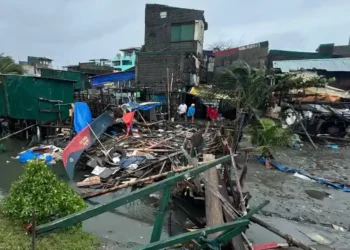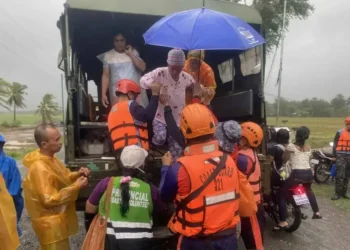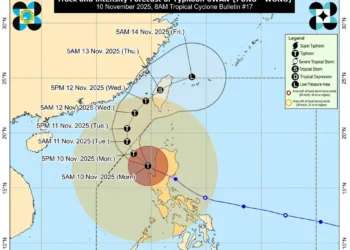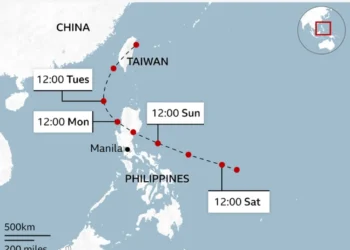Heavy Rain and Flash Floods in Indian Kashmir Result in Multiple Deaths and Hundreds Missing
Published Time: 08-15-2025, 15:20
A sudden cloudburst in India-administered Kashmir has caused severe flash floods, claiming at least 46 lives and leaving over 200 people missing in Chashoti, a key pilgrimage town. Rescue teams from the army, police, and disaster response units are actively searching for survivors amid ongoing devastation.
Flash Floods Wreak Havoc in Chashoti
The town of Chashoti, located in the Himalayan region and known for the Machail yatra pilgrimage, experienced sudden, intense rainfall that turned roads into rivers and destroyed homes, vehicles, and infrastructure. Dramatic footage shared on social media showed walls of water, mud, and debris racing down the mountainside, sweeping away everything in its path.
According to local officials cited by Reuters, at least 46 people have died, and more than 200 remain unaccounted for. Rescued individuals have been transported to nearby hospitals for treatment.
Jammu and Kashmir Chief Minister Omar Abdullah confirmed the severity of the disaster on social media:
“The news is grim & accurate. All possible resources are being mobilised from within & beyond J&K to manage the rescue operations.”
Cloudburst: The Cause of Sudden Flooding
India’s Meteorological Department explained that the heavy rain was caused by a cloudburst, a phenomenon where over 100 mm (4 inches) of rain falls in just one hour. Cloudbursts are particularly dangerous in mountainous regions as they can trigger flash floods, landslides, and sudden destruction during the monsoon season.
This incident is the second major flood disaster in the Indian Himalayas in recent weeks. Earlier in August, a surge of floodwater struck a village in Uttarakhand, resulting in at least four fatalities.
Impact on Pilgrims and Local Infrastructure
Chashoti serves as the last motorable point for the Machail yatra, a pilgrimage to the high-altitude Himalayan shrine of Machail Mata, a manifestation of Goddess Durga. Pilgrims typically trek from Chashoti to the temple, making the town a hub for thousands of devotees.
The floodwaters washed away a community kitchen and a security post along the pilgrimage route, according to a local official who requested anonymity.
“A large number of pilgrims had gathered for lunch and they were washed away,” the official told Reuters.
The sudden deluge struck around 11:30 a.m. local time, according to Ramesh Kumar, divisional commissioner of Kishtwar district, who confirmed that police and disaster response teams had reached the affected area immediately.
“Army, air force teams have also been activated. Search and rescue operations are underway,” Kumar added.
Emergency Response and Rescue Efforts
Rescue operations involve a coordinated effort among army, air force, and police units, working under challenging terrain and continuing rainfall. Efforts are focused on locating missing individuals, evacuating survivors, and providing urgent medical care.
In response to the disaster, Chief Minister Abdullah announced the cancellation of certain events planned to celebrate the anniversary of India’s independence on August 15, emphasizing that all attention must remain on rescue operations.
Authorities are also deploying temporary shelters and relief supplies for affected families, while communication networks are being restored to coordinate aid effectively.
Monsoon Risks in Himalayan Regions
The Chashoti disaster highlights the vulnerability of Himalayan towns to extreme weather events during the monsoon season. Sudden cloudbursts can occur without warning, putting residents, tourists, and pilgrims at high risk. Experts note that the steep terrain and narrow river valleys amplify the destructive potential of flash floods.
Meteorological agencies have urged residents and travelers in northern India to remain vigilant and monitor weather advisories closely. Efforts are ongoing to improve early warning systems and emergency preparedness in flood-prone regions.
International and Local Attention
News of the floods has drawn national and international attention, with relief organizations and government agencies mobilizing additional support. Social media posts by witnesses and local authorities have been critical in guiding rescue operations, helping locate stranded individuals and provide timely updates on the situation.
As the search continues, authorities are urging families of missing pilgrims to report their loved ones’ last known locations, aiding in faster rescue and recovery.
Looking Ahead
While rescue efforts continue, the Chashoti cloudburst serves as a stark reminder of the impacts of extreme weather in mountainous regions. Officials emphasize the importance of preparedness, real-time monitoring, and rapid response to minimize loss of life during monsoon-related disasters.
Researchers and local administrations are also exploring long-term strategies to reduce the vulnerability of Himalayan towns, including flood-resistant infrastructure, awareness campaigns, and improved evacuation plans.
This article was rewritten by JournosNews.com based on verified reporting from trusted sources. The content has been independently reviewed, fact-checked, and edited for accuracy, neutrality, tone, and global readability in accordance with Google News and AdSense standards.
All opinions, quotes, or statements from contributors, experts, or sourced organizations do not necessarily reflect the views of JournosNews.com. JournosNews.com maintains full editorial independence from any external funders, sponsors, or organizations.
Stay informed with JournosNews.com — your trusted source for verified global reporting and in-depth analysis. Follow us on Google News, BlueSky, and X for real-time updates.













